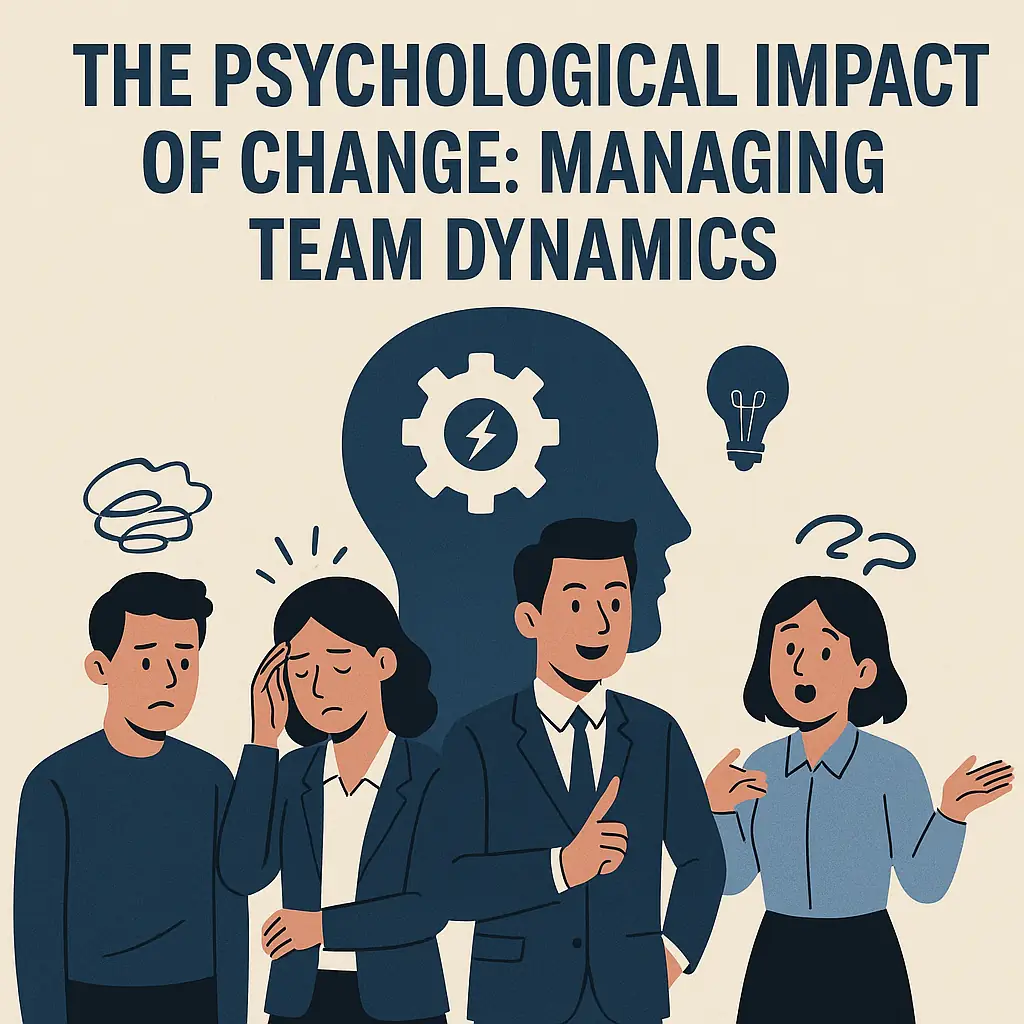Introduction
Change is an inevitable and often necessary component that can significantly influence the trajectory of a project. Change refers to any alteration in the project scope, objectives, or deliverables that can arise from various factors, including stakeholder feedback, market conditions, or technological advancements. Understanding how to effectively manage these changes is crucial for project success, as poorly managed change can lead to confusion, decreased productivity, and low morale among team members.
To navigate the complexities of change, organizations implement a change control process flow. This structured approach ensures that all changes are systematically evaluated, approved, and communicated, minimizing disruption and maintaining project integrity. The change control process typically involves several key steps, including identifying the change, assessing its impact, obtaining necessary approvals, and implementing the change while monitoring its effects. By adhering to this process, project managers can facilitate smoother transitions and maintain alignment with project goals.
However, the psychological impact of change on team dynamics cannot be overlooked. Changes in project direction or scope can evoke a range of emotional responses from team members, including anxiety, resistance, and uncertainty. These reactions can affect team morale and collaboration, making it essential for leaders to be attuned to the emotional landscape of their teams during periods of change. Understanding team dynamics—how individuals interact, communicate, and work together—is vital for fostering a supportive environment that encourages adaptability and resilience.
Understanding Team Dynamics
Understanding team dynamics is crucial, especially during periods of change. Team dynamics refer to the behavioral relationships and interactions among team members, which can significantly influence the overall effectiveness and morale of the group. Here are some key components and considerations regarding team dynamics in the context of change:
Definition of Team Dynamics
- Components of Team Dynamics: Team dynamics encompass various elements, including communication styles, leadership approaches, individual roles, and the collective culture of the team. These components interact to shape how team members collaborate, resolve conflicts, and achieve common goals.
Psychological Responses to Change
- Resistance to Change: One of the most common psychological responses to change is resistance. Team members may feel threatened by the uncertainty that change brings, leading to pushback against new processes or structures. This resistance can manifest in various ways, such as decreased productivity, negative attitudes, or open dissent.
- Anxiety and Stress: Change often triggers anxiety among team members, as they may worry about their job security, the adequacy of their skills in the new environment, or the potential for increased workload. This anxiety can lead to a decline in morale and overall team cohesion, making it essential for leaders to address these feelings proactively.
The Role of Trust and Communication
- Building Trust: Trust is a foundational element of effective team dynamics. During times of change, leaders must work to maintain and build trust within the team. This can be achieved by being transparent about the reasons for the change, involving team members in the decision-making process, and demonstrating reliability in leadership actions.
- Effective Communication: Open and honest communication is vital in managing team dynamics during change. Leaders should ensure that team members are informed about what changes are occurring, why they are necessary, and how they will be implemented. Regular updates and opportunities for feedback can help alleviate anxiety and foster a sense of inclusion.
The Psychological Impact of Change
Change is an inevitable part of any project management process, and its psychological impact on team members can be profound. Understanding how change affects team morale and dynamics is crucial for team leaders and HR professionals. This section explores the emotional responses to change, their implications for productivity, and offers insights.
Common Emotional Responses to Change
- Fear and Anxiety: Change often brings uncertainty, leading to fear among team members about their roles, job security, and the future of the project. This fear can manifest as anxiety, which may hinder their ability to focus and perform effectively.
- Resistance: Many individuals instinctively resist change due to a natural inclination towards stability. This resistance can create friction within the team, leading to conflicts and a breakdown in communication.
- Loss of Control: When changes are implemented, team members may feel a loss of control over their work environment. This feeling can lead to frustration and disengagement, as employees may feel that their input is undervalued.
- Uncertainty: Uncertainty about new processes, roles, or expectations can lead to confusion and a lack of direction. Team members may struggle to adapt, which can further exacerbate feelings of anxiety and fear.
Impact on Productivity and Morale
The emotional responses to change can significantly affect team productivity and morale:
- Decreased Productivity: Fear and uncertainty can lead to decreased focus and motivation, resulting in lower productivity levels. Team members may spend more time worrying about the implications of change rather than engaging in their tasks.
- Lowered Morale: When team members feel anxious or resistant, it can create a negative atmosphere. This lowered morale can lead to disengagement, increased absenteeism, and higher turnover rates, which can be detrimental to project success.
- Communication Breakdown: Emotional responses can hinder open communication. Team members may be less likely to share their concerns or ideas, leading to a lack of collaboration and innovation.
The Change Control Process Flow
The change control process is a critical framework that helps teams navigate the complexities of change while maintaining morale and productivity. Understanding this process is essential for team leaders and HR professionals who aim to manage the psychological impacts of change effectively. Below, we outline the stages of the change control process, discuss its importance in mitigating negative psychological effects, and explore tools and methodologies that can support this process.
Stages of the Change Control Process
- Identification: The first step involves recognizing the need for change. This could stem from various sources, such as stakeholder feedback, project performance metrics, or external market conditions. Early identification is crucial as it sets the stage for a structured response to change.
- Assessment: Once a change is identified, it must be assessed for its potential impact on the project and the team. This includes evaluating the benefits, risks, and resources required. Engaging team members in this stage can foster a sense of ownership and reduce resistance to change.
- Implementation: After thorough assessment, the change is implemented. This stage requires clear communication and a well-defined plan to ensure that all team members understand their roles and responsibilities. Effective implementation is key to minimizing disruption and maintaining team morale.
- Review: The final stage involves reviewing the change’s effectiveness and its impact on the team and project outcomes. This feedback loop is essential for continuous improvement and helps in refining future change control processes.
Mitigating Negative Psychological Impacts
Effective change control can significantly reduce the negative psychological impacts that often accompany change. By following a structured process, team leaders can:
- Enhance Communication: Clear and transparent communication throughout the change process helps alleviate uncertainty and anxiety among team members. When individuals understand the reasons for change and how it will affect them, they are more likely to embrace it positively.
- Foster Involvement: Involving team members in the change process, especially during the assessment and implementation stages, can enhance their commitment and reduce feelings of helplessness. This participatory approach can lead to increased morale and a stronger team dynamic.
- Provide Support: Offering support mechanisms, such as training or counseling, during the change process can help team members cope with the transition. This support is vital in addressing any emotional or psychological challenges that may arise.
Tools and Methodologies to Support Change Control
Several tools and methodologies can enhance the effectiveness of the change control process:
- Change Management Software: Tools like Asana, Trello, or Microsoft Project can help track changes, manage tasks, and facilitate communication among team members. These platforms provide a centralized location for all change-related information, making it easier to manage and review changes.
- Stakeholder Analysis: Conducting a stakeholder analysis helps identify who will be affected by the change and how. This analysis can guide communication strategies and ensure that all voices are heard during the change process.
- Change Impact Assessment: Utilizing templates or frameworks for change impact assessments can streamline the evaluation process. This ensures that all potential impacts are considered and addressed, leading to more informed decision-making.
- Feedback Mechanisms: Implementing regular feedback loops, such as surveys or team meetings, allows for ongoing assessment of the change process. This can help identify issues early and adjust strategies as needed.
Strategies for Managing Change and Team Dynamics
Change is an inevitable part of project management, and its impact on team dynamics can be profound. As team leaders and HR professionals navigate the complexities of change, it is crucial to implement effective strategies that not only facilitate the transition but also maintain team morale and cohesion. Here are some actionable strategies to consider:
1. Encourage Open Communication and Feedback
- Foster Transparency: Create an environment where team members feel safe to express their thoughts and concerns about the changes being implemented. Regular updates and open forums for discussion can help alleviate anxiety and uncertainty.
- Solicit Feedback: Actively seek input from team members regarding the change process. This can be done through surveys, one-on-one meetings, or team discussions. Understanding their perspectives can help leaders address concerns and make necessary adjustments to the change plan.
- Acknowledge Emotions: Recognize that change can evoke a range of emotions, from excitement to fear. Validating these feelings can help team members feel heard and supported, which is essential for maintaining morale during transitions.
2. Implement Training and Support Systems
- Provide Training Opportunities: Equip team members with the skills and knowledge they need to adapt to new processes or technologies. This could include workshops, online courses, or mentorship programs that focus on the specific changes being introduced.
- Establish Support Networks: Create support systems such as peer mentoring or buddy programs where team members can lean on each other during the transition. This not only fosters collaboration but also builds a sense of community within the team.
- Offer Resources: Ensure that team members have access to resources that can help them navigate the change. This might include documentation, FAQs, or access to change management experts who can provide guidance.
3. Promote a Culture of Resilience and Adaptability
- Encourage a Growth Mindset: Cultivate an organizational culture that values learning and adaptability. Encourage team members to view challenges as opportunities for growth rather than obstacles. This mindset can significantly enhance resilience during times of change.
- Celebrate Small Wins: Recognize and celebrate achievements, no matter how small, during the change process. This can boost morale and reinforce the idea that progress is being made, which can motivate the team to continue pushing forward.
- Lead by Example: As a leader, demonstrate adaptability and a positive attitude towards change. Your behavior sets the tone for the team, and showing that you embrace change can inspire others to do the same.
By implementing these strategies, team leaders and HR professionals can effectively manage the psychological impact of change on team dynamics. Open communication, robust support systems, and a culture of resilience are key components in ensuring that teams not only survive change but thrive in it.
The Role of Leadership in Facilitating Positive Outcomes
Leadership plays a pivotal role in managing change and its psychological impact on teams. Effective leaders:
- Communicate Clearly: They provide clear, consistent messaging about the reasons for change and the expected outcomes, which helps to alleviate uncertainty and anxiety among team members.
- Foster Inclusivity: By involving team members in the change process, leaders can create a sense of ownership and commitment, which enhances morale and reduces resistance to change.
- Provide Support: Leaders who offer resources, training, and emotional support during transitions help teams navigate challenges more effectively, leading to a more resilient workforce.
Lessons Learned and Best Practices
- Engagement is Key: Actively involving team members in the change process fosters a sense of belonging and reduces resistance. Regular check-ins and feedback mechanisms can enhance this engagement.
- Adaptability Matters: Organizations should be prepared to adapt their change control processes based on team feedback and changing circumstances. Flexibility can lead to better outcomes and increased team morale.
- Celebrate Successes: Recognizing and celebrating milestones during the change process can boost team morale and reinforce positive dynamics. Acknowledging the efforts of team members fosters a culture of appreciation and motivation.
Conclusion
Understanding the psychological impact of change on teams is crucial for maintaining morale and ensuring productivity. Change, whether anticipated or unexpected, can evoke a range of emotional responses among team members, including anxiety, resistance, and uncertainty. These reactions can significantly affect team dynamics, leading to decreased collaboration and engagement. Therefore, it is essential for team leaders and HR professionals to recognize these psychological effects and address them proactively.
A structured change control process serves as a vital framework for managing transitions effectively. By implementing a clear and systematic approach to change, organizations can minimize disruption and provide team members with the support they need to adapt. This process not only helps in mitigating resistance but also fosters a sense of security and stability within the team. It ensures that all stakeholders are informed, involved, and prepared for the changes ahead, thereby enhancing overall team cohesion.
To cultivate a positive team environment during periods of change, it is imperative to adopt proactive strategies. Encouraging open communication, providing training and resources, and involving team members in the change process can significantly enhance their sense of ownership and commitment. Additionally, recognizing and addressing individual concerns can help alleviate fears and build trust within the team. By prioritizing these strategies, leaders can create a resilient team that not only navigates change effectively but also thrives in the face of it.
In summary, the psychological impact of change on teams cannot be underestimated. A structured change control process is essential for managing this impact, and adopting proactive strategies will foster a supportive and positive team environment. By doing so, team leaders and HR professionals can ensure that their teams remain engaged, motivated, and ready to embrace change as an opportunity for growth.
Find out more about Shaun Stoltz https://www.shaunstoltz.com/about/.
This post was written by an AI and reviewed/edited by a human.



